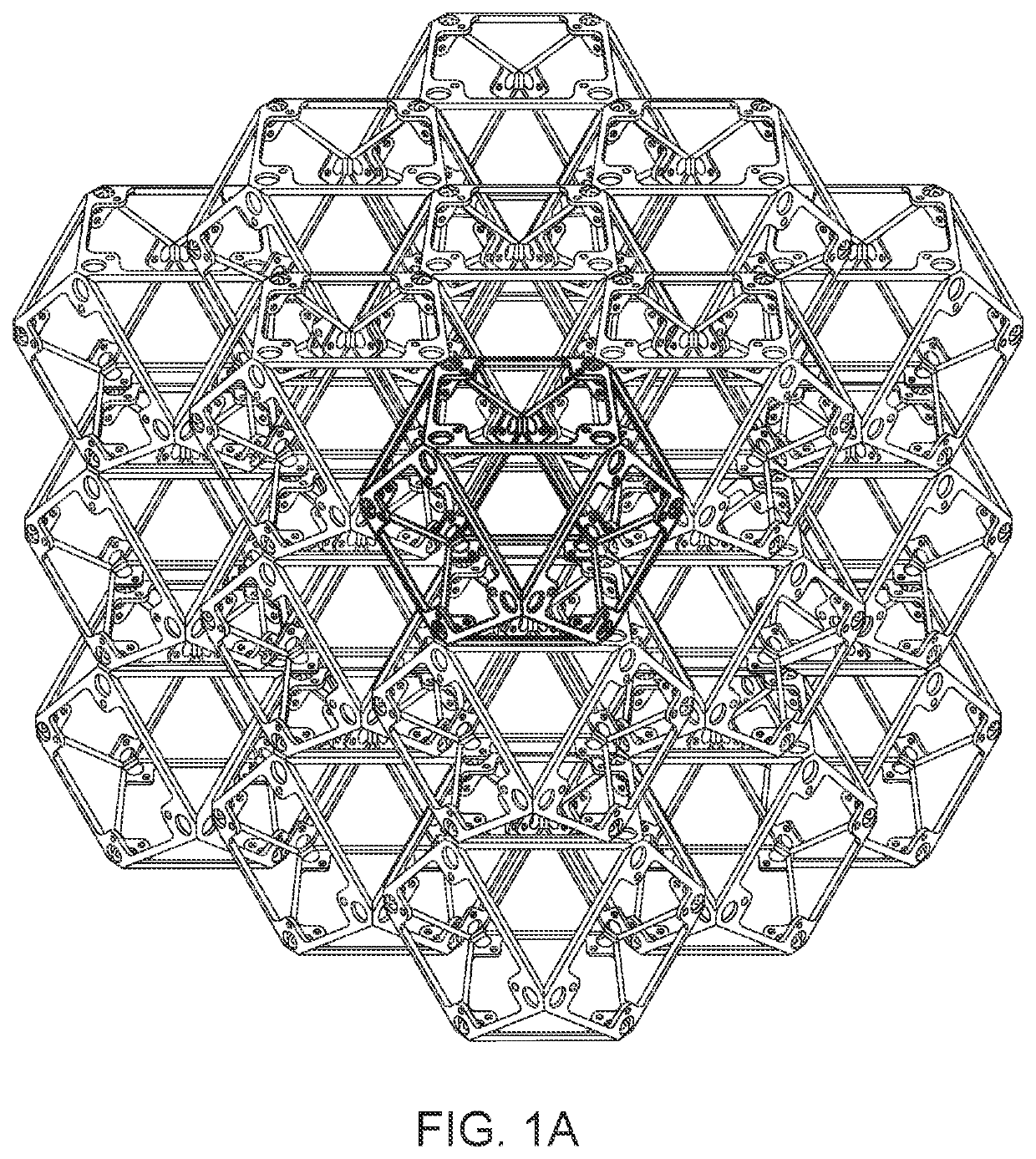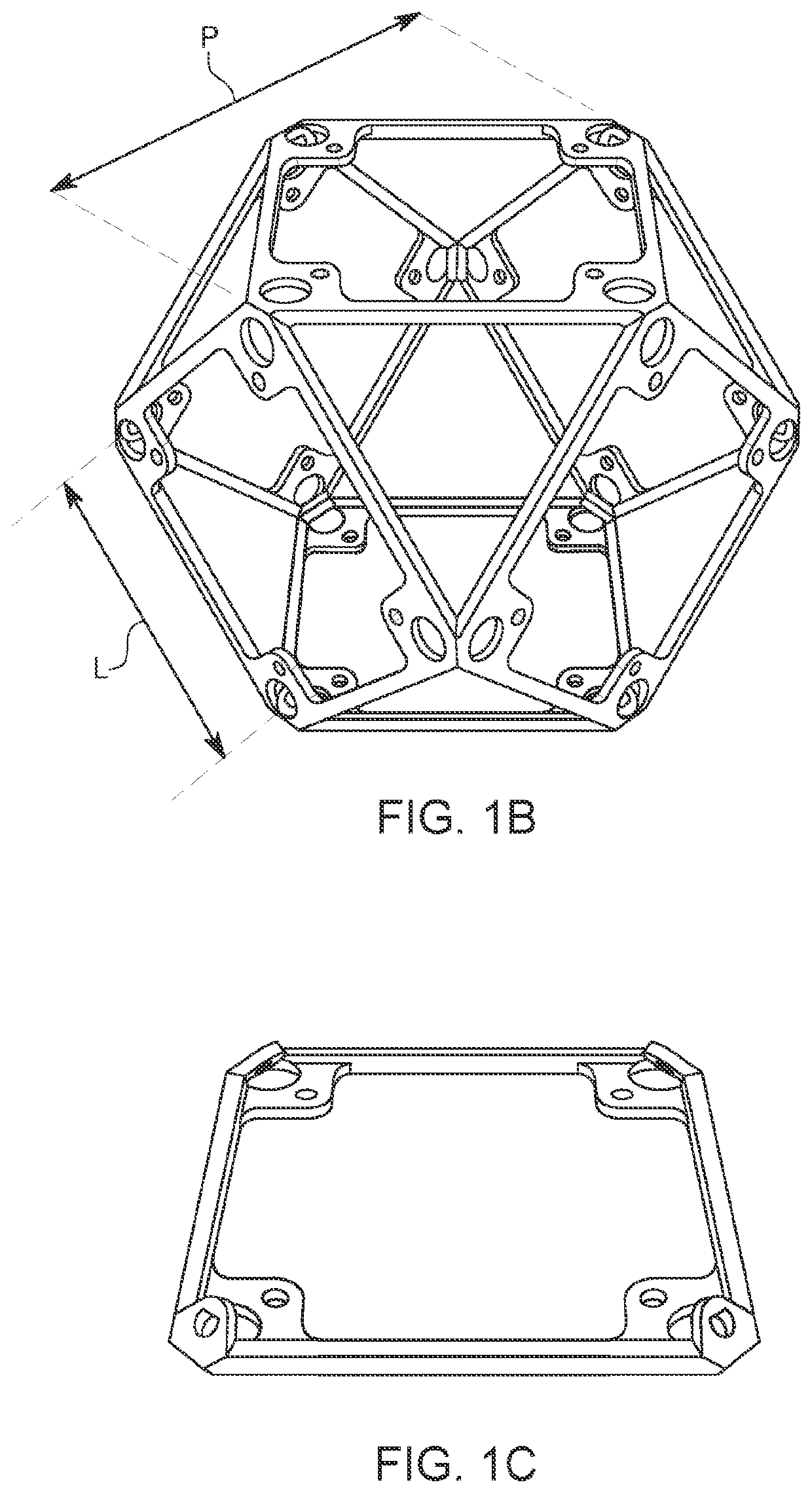Discrete macroscopic metamaterial systems
a metamaterial and discrepancy technology, applied in the field of macroscopic metamaterial systems and assembly methods, can solve the problems of low efficiency, difficult and expensive construction of high-performance structures, and insufficient information and limited information in engineering structures and systems of today, and achieve the effect of decreasing the effective density
- Summary
- Abstract
- Description
- Claims
- Application Information
AI Technical Summary
Benefits of technology
Problems solved by technology
Method used
Image
Examples
Embodiment Construction
[0034]The following detailed description is of the best currently contemplated modes of carrying out exemplary embodiments of the invention. The description is not to be taken in a limiting sense but is made merely for the purpose of illustrating the general principles of the invention, since the scope of the invention is best defined by the appended claims.
[0035]Broadly, an embodiment of the present invention provides a construction system for mechanical metamaterials based on discrete assembly of a finite set of modular, mass-produced parts. A modular construction scheme enables a range of mechanical metamaterial properties to be achieved, including rigid, compliant, auxetic and chiral, all of which are assembled with a consistent process across part types, thereby expanding the functionality and accessibility of this approach. The incremental nature of discrete assembly enables mechanical metamaterials to be produced efficiently and at low cost, beyond the scale of the 3D printer...
PUM
| Property | Measurement | Unit |
|---|---|---|
| lengths | aaaaa | aaaaa |
| Poisson's ratio | aaaaa | aaaaa |
| angle of incidence | aaaaa | aaaaa |
Abstract
Description
Claims
Application Information
 Login to View More
Login to View More - R&D
- Intellectual Property
- Life Sciences
- Materials
- Tech Scout
- Unparalleled Data Quality
- Higher Quality Content
- 60% Fewer Hallucinations
Browse by: Latest US Patents, China's latest patents, Technical Efficacy Thesaurus, Application Domain, Technology Topic, Popular Technical Reports.
© 2025 PatSnap. All rights reserved.Legal|Privacy policy|Modern Slavery Act Transparency Statement|Sitemap|About US| Contact US: help@patsnap.com



